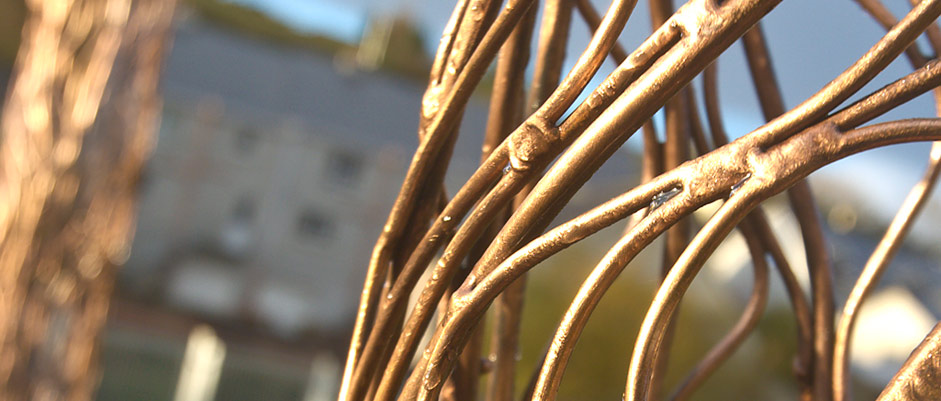HEART Project, The Three Fates
by Elizabeth Caffrey
The three fates, figures from Greek mythology, are illustrated in the form of tree trunks, symbolically represented by the branching, knotting and callus formations determining a trees growth. Inspiration: “The impact of Ardara within its surrounding environs can never be understated. It’s living landscape, the surrounding district, is a vital resource. However the inter- dependency between its need to attract tourists and that of carefully monitoring our impact is a delicate balance. We too will become the... READ MORE
HEART Project, The Three Fates, 2008
Commissioned under the HEART project and supported by Donegal County Council Public Art Program under the Per Cent for Art Scheme. The work is composed of three welded bronze rod forms, each approximately two to three metres high, the lines and movement of which are reminiscent of botanical forms.
Materials used, Hand altered and welded bronze rod. Located at Herron’s’ Field, Ardara, County Donegal.
Click to download the HEART PROJECT brochure
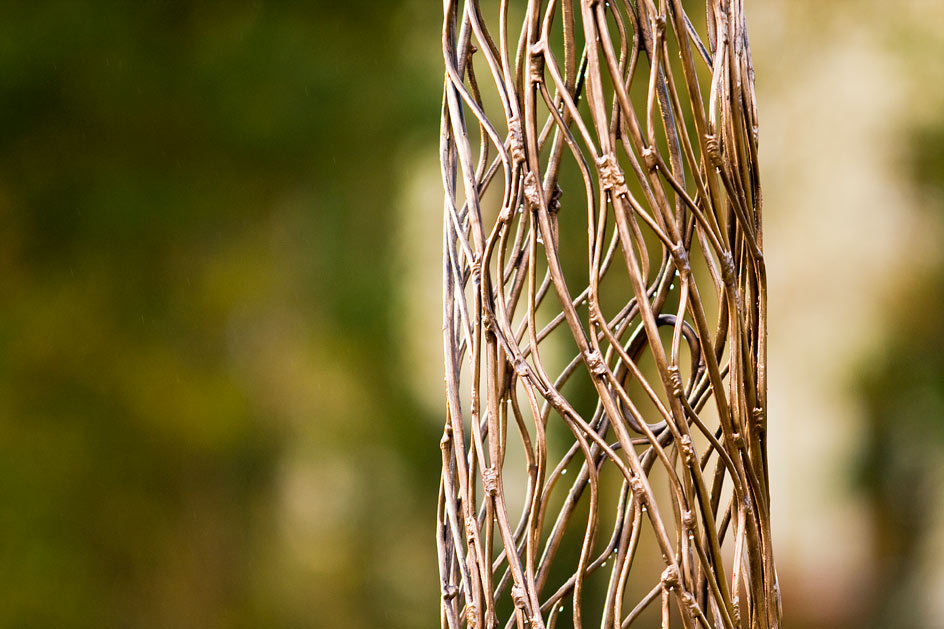
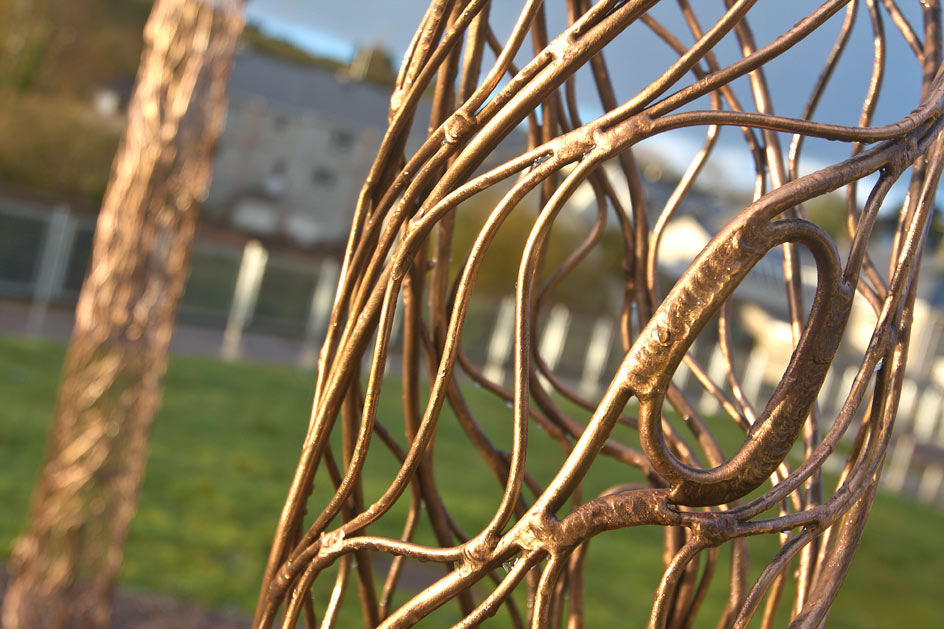
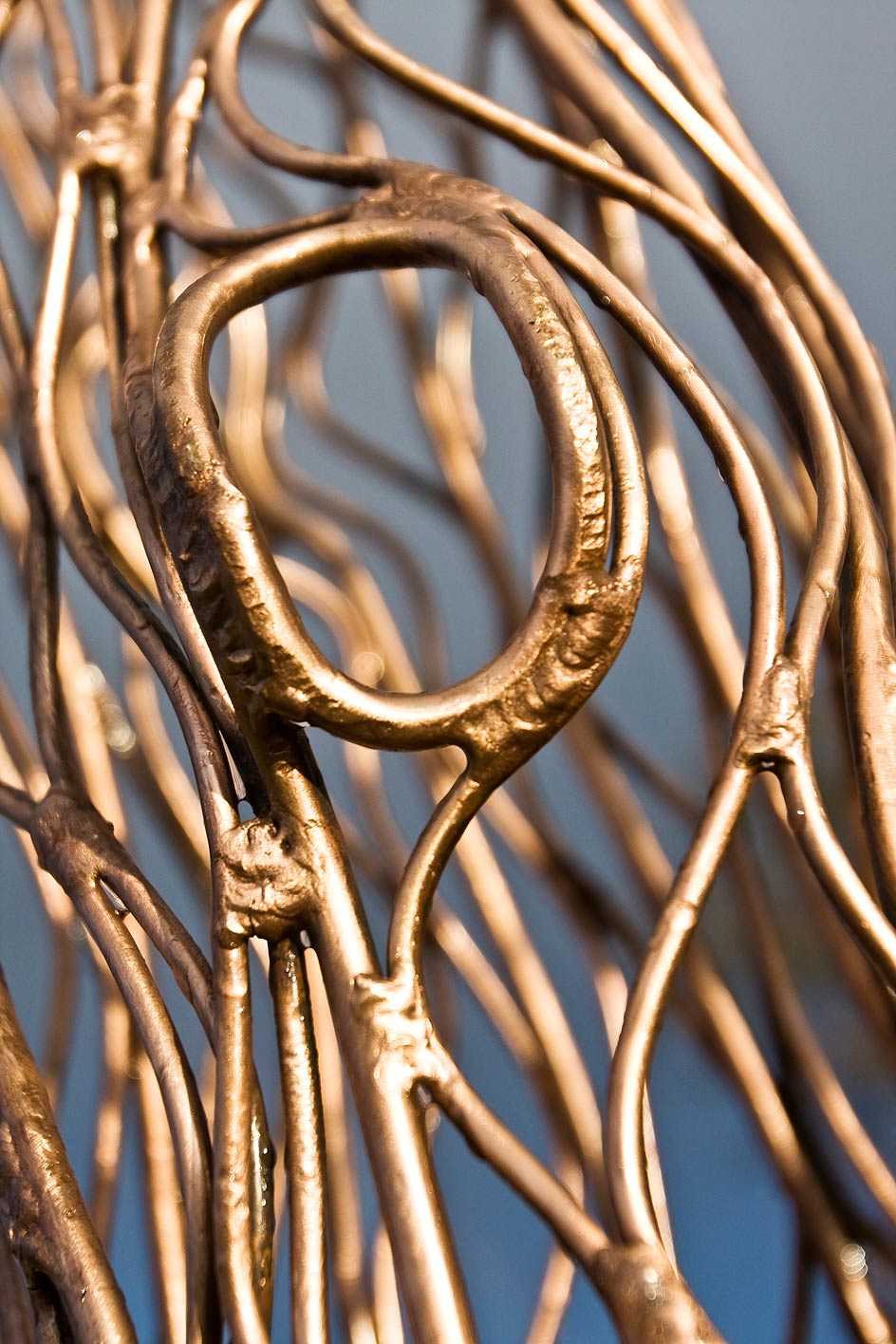
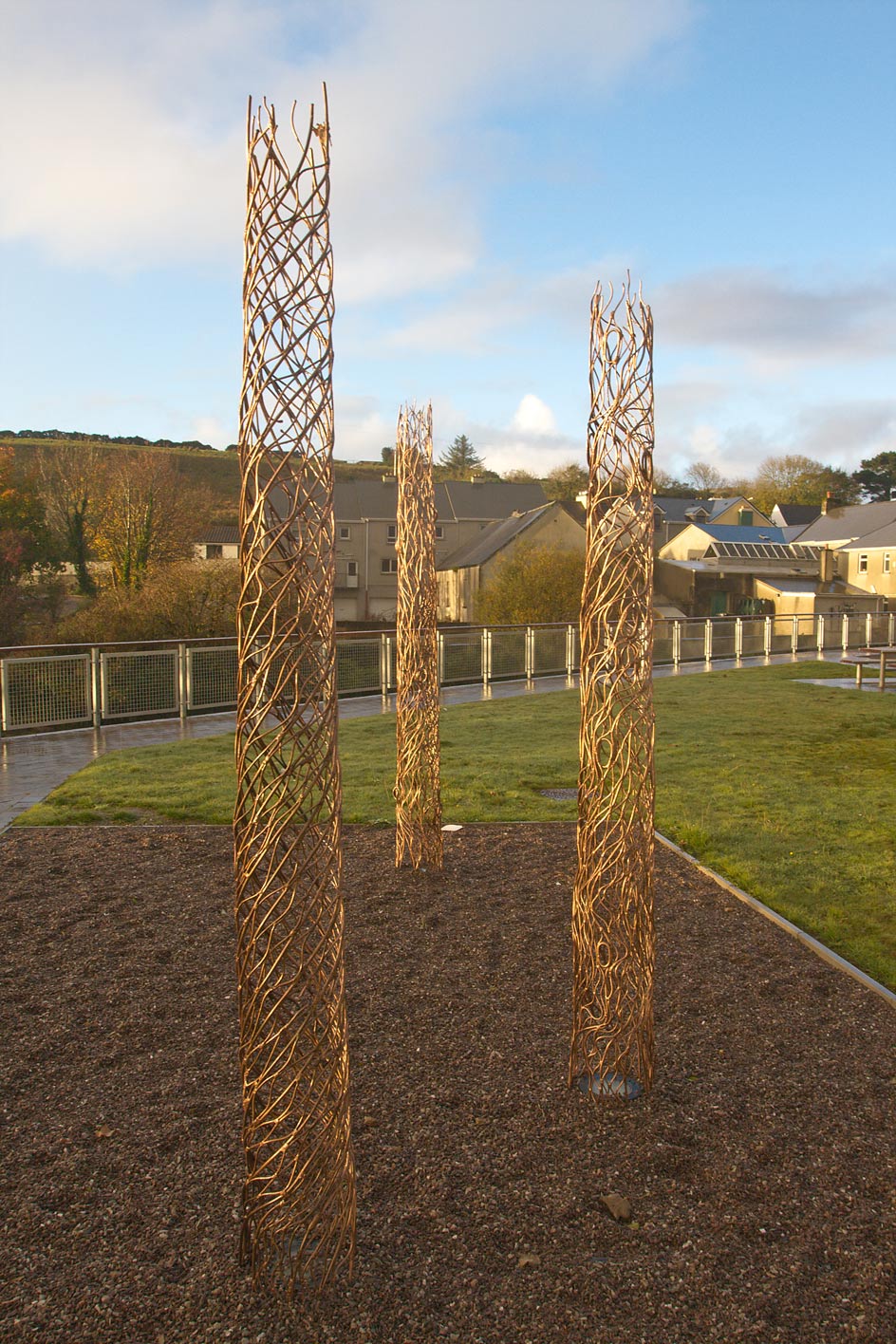
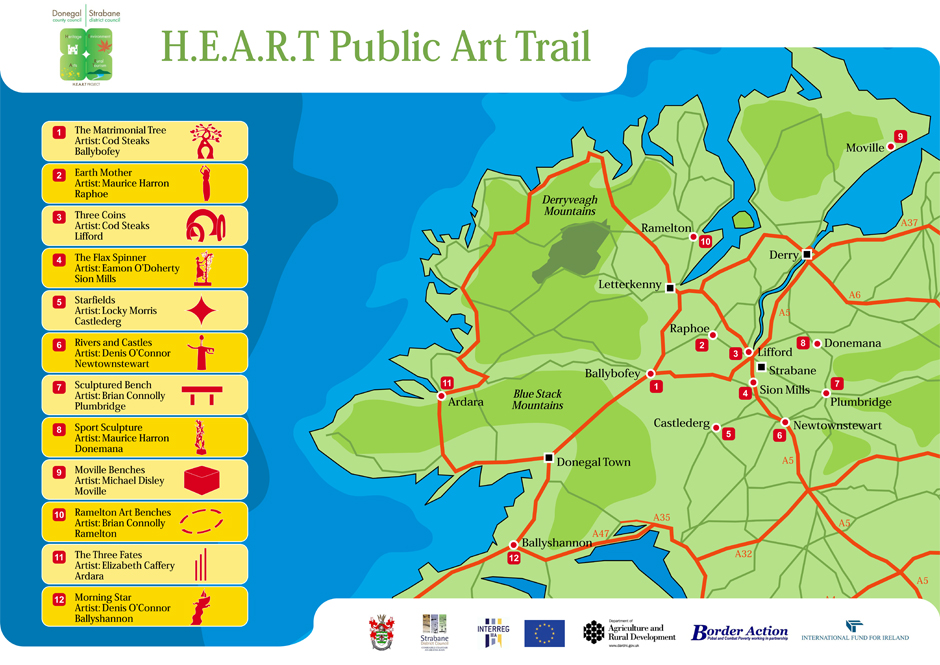
Biography of artist
Elizabeth Caffery
Based in Sligo, Elizabeth Caffery has exhibited in group and sole exhibitions throughout Ireland, the UK and Europe, and was artist in residence in the Portuguese Azores. She has been widely recognised for her work, winning numerous awards. Elizabeth is employed both on a full time capacity and as a visiting lecturer, teaching subjects such as; working with ceramics, sculptural studies and fine art & design. She is a member of the network, Visual Artists Ireland and has experience of working on private collections in Bermuda, New York, London, Nice, Dublin and Sligo.
Inspiration
“The impact of Ardara within its surrounding environs can never be understated. It’s living landscape, the surrounding district, is a vital resource. However the inter- dependency between its need to attract tourists and that of carefully monitoring our impact is a delicate balance. We too will become the catalyst for its demise unless this is carefully governed. To consider this space / place in a meaningful sense there were two aspects which I was drawn to, both of which are essential and both are intertwined. It is that of the Owentocker river and the weaving heritage of Ardara, each of which serves as a life line to the area. The lines in the chosen forms are suggested by the movement of the river and that of the patterns / movements employed in the act of weaving.
In Greek mythology Clotho is the spinner, spinning the thread of life from her distaff to her spindle. Then Lachesis, measures the thread of life with her rod, allotting us our portion and finally Atropos, the cutter of the thread. It is she who chooses the manner of a person’s death. These characters are suggestive of the triple aspect of birth, life and death, aspects which are known and understood universally. Illustrated in the form of tree trunks these different elements are symbolically represented by the budding , knotting and callus formations employed in a tree’s growth, each telling of particular environmental and external conditions. As a result, the historical and environmental are intertwined, resulting in an artwork which can be interpreted on many levels and which has taken its basis from Ardara’s past, but reconsiders its history in a more universal context.”
